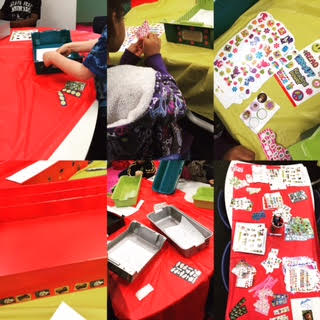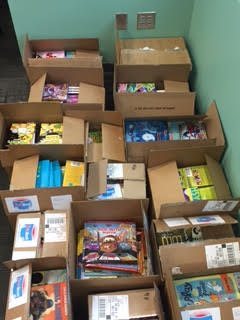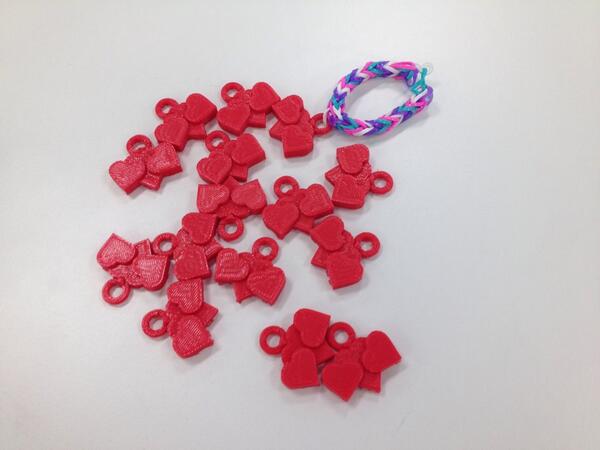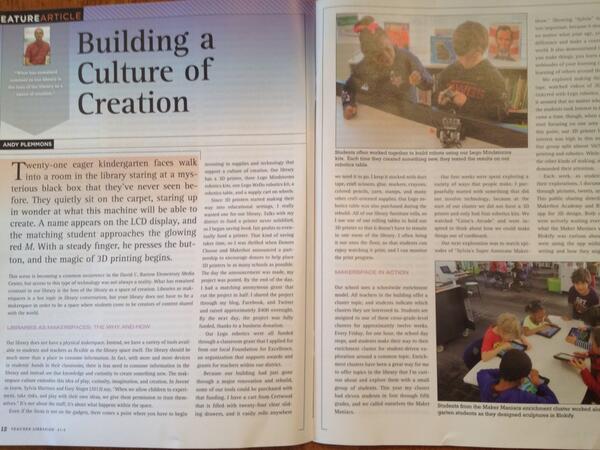
We are quickly approaching summer at our school, so we have been winding down activities in the library and looking ahead to what we might read this summer. There are many pieces that go into encouraging students to read over the summer, and I love that we are always trying new ideas to encourage our students to read.
Our family engagement specialist, some teachers, and the Junior League of Athens went into the community center of one of the communities we serve to host a family literacy workshop. Families decorated book boxes, learned some reading strategies, and talked about the importance of a home library. The Junior League will be putting 6 books in each of those boxes to go to families who participated.
Our Athens Clarke County Public Library came into the school and met with Kindergarten, 1st grade, and 2nd grade to talk about the summer reading program. Evan Bush, head children’s librarian, sang songs, told stories, and highlighted the numerous events happening at the public library this summer.

Those include puppet shows, Minecraft crafts, live animals, a real life mermaid and pirate, and more. For the summer reading incentive, students earn a button for every 10 books or 5 hours that they read. Each button corresponds with a different land that students imagine traveling to over the summer such as the Hundred Acre Wood, Wonderland, and Hogwarts.
Those buttons will go onto a lanyard as students earn them. Also, the elementary school with the most students to complete the summer reading challenge will earn a trophy to keep at the school for the year.
Another project I’ve been working on is proving books to an additional community within our school to build up home libraries. This project was funded through a grant from First Book UGA and donations from a GoFundMe campaign I created. Approximately 78 students are a part of this project, I surveyed the students to learn more about their reading interests and then ordered books through First Book to give them for summer reading.

The students came to the library in small groups to decorate a box to put their books in. The boxes were reused boxes that I found at our local recycling facility and spray painted. Students chose from a variety of stickers to personalize their boxes.

It was great to see that students of every age got excited about using stickers to personalize their box. My hope is that a personal touch will create a connection to the box and encourage them to use it to store books.

When the books arrived, Camilla Bracewell, volunteer extraordinaire, came and helped me unbox them all onto tables. I printed out the spreadsheets I had created with each student’s personal order.

Since I was more familiar with what the books looked liked, Camilla helped read off names of students and filled the boxes as I pointed out the books or handed them to her. Because of the wonderful prices through First Book, I was able to give each student 7 books for summer reading. I even have a few books left over that teachers will use to give to additional students who might need some books for the summer.


Next week, I’m hosting two sessions for families to stop by and pick up the book boxes, but any remaining boxes will go home with students throughout the week.

Thanks to Get Georgia Reading, all students in Georgia also have access to MyOn from Capstone for the summer. I’m taking time to show this to families, individual students, small groups, and whole classes. This is a great way to have unlimited access to thousands of books for summer reading and they are never checked out.
Summer reading is a special time because it’s a chance for students to read things that really interest them. It’s a chance to take a break from the “requirements” of school and just read for the fun of it. I hope that we have shown students and families enough options as well as provided some tangible materials that all readers in our school have an idea of the reading they will do over the summer.
Happy reading!










